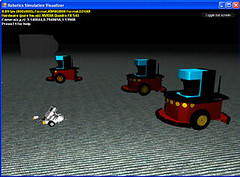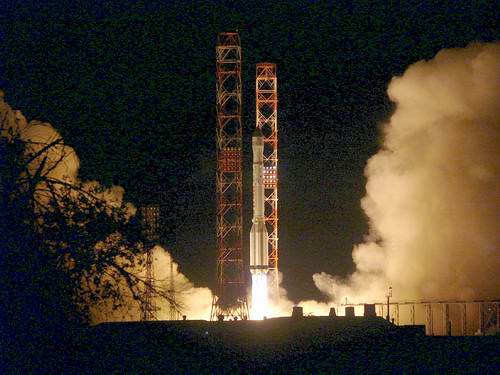Mitex Launch Today
Thursday, June 22nd, 2006The New Scientist reports:
The US military is preparing to launch two technology demonstration satellites on Wednesday, collectively known as the Micro-satellite Technology Experiment (Mitex).
The craft will launch aboard a Delta II rocket from Cape Canaveral Air Force Station, Florida, US. The launch window lasts from 1734 to 2134 EDT (2134 to 0134 GMT on 22 June).
The micro-satellites will test a range of technologies for the Defense Advanced Research Projects Agency (DARPA), the US Air Force and the US Navy. These include avionics, advanced communications, fuels that spontaneously ignite on contact, solar cells and new software. No further details of the technologies are available.
DARPA is interested in investigating the capabilities of small satellites, says DARPA spokesperson Jan Walker. One particular focus of the mission is reducing the mass of equipment by using lightweight materials….
he technologies could have been tested with a single satellite, but because the demonstrator mission has few back-up systems and little pre-flight testing, DARPA decided to split the payload in two to maximise their chances of success.
It’s not just small satellites being tested:
The mission will also be the first flight test of an experimental rocket upper stage for the US Naval Research Laboratory. The upper stage will lift the satellites on the final leg of their journey into geosynchronous orbit.
Some of stage’s new features include: lightweight titanium propellant tanks with internal propellant management devices; novel attitude control thrusters; and solar cells with three semi-conducting layers to more efficiently convert sunlight into electricity.
A larger version of the Mitex launch components diagram can be found here.

 near Guam, North Korea has reportedly fueled up a Taepodong missile and is ready to light the fuse.
near Guam, North Korea has reportedly fueled up a Taepodong missile and is ready to light the fuse.




